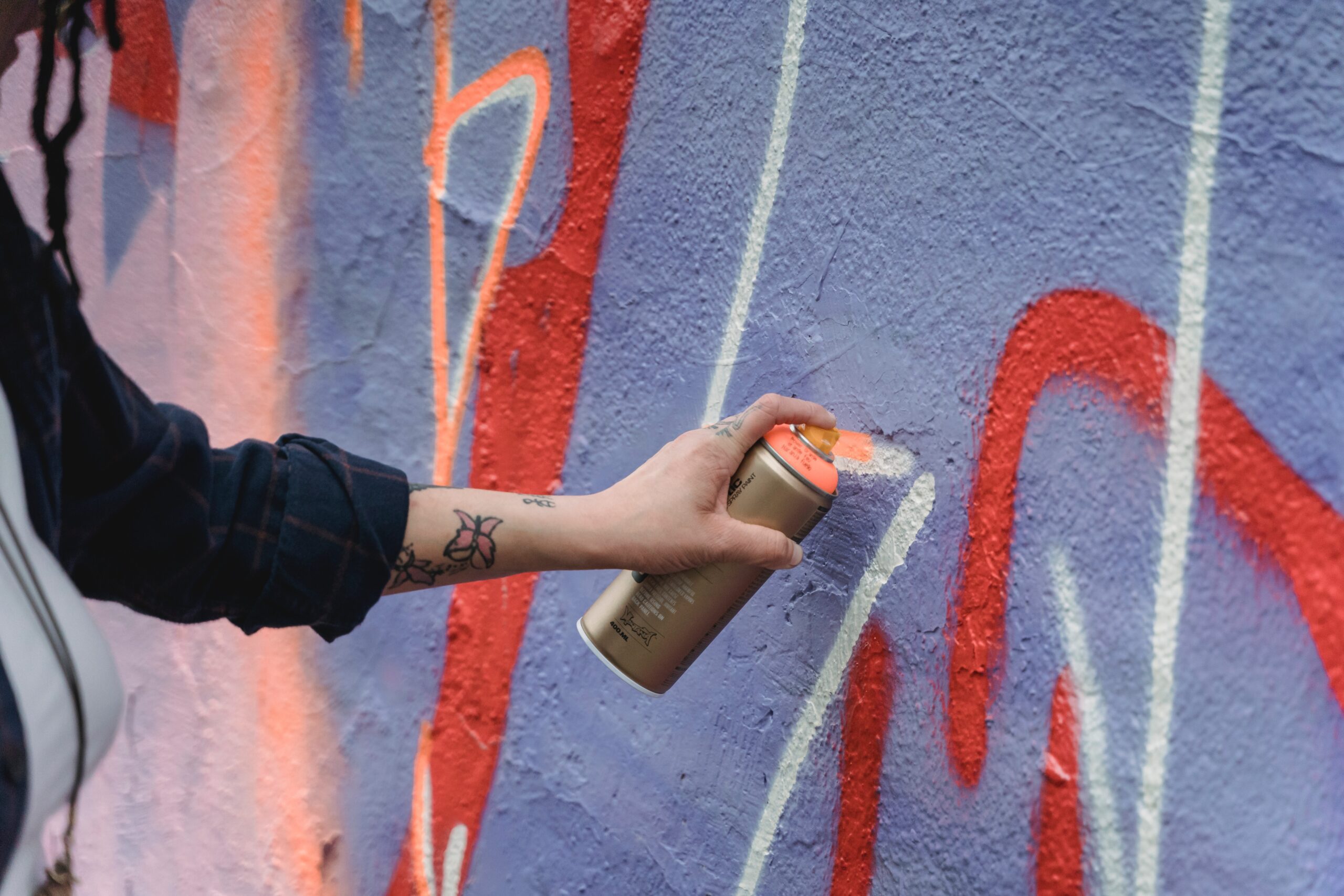
What Is Graffiti Art?
Originating in the 1970s New York graffiti art was founded when young people began to use spray paint and other materials to create images on buildings and on the sides of subway trains. Such graffiti can range from bright graphic images to stylized monograms.
Graffiti as such is rarely seen in galleries and museums, yet its aesthetic has been incorporated into artists’ work. Early exponents of graffiti in art included the French artist Jean Dubuffet who incorporated tags and graphic motifs into his paintings, and the New York artists Jean-Michel Basquiat and Keith Haring who could be defined as street art pioneers.
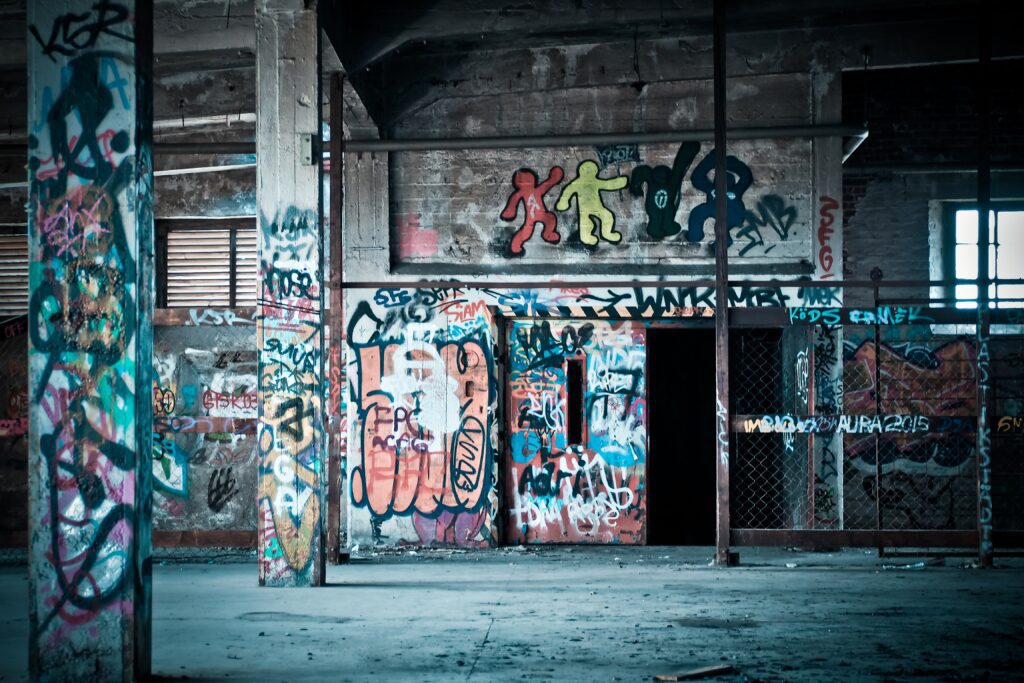
History Of Graffiti
Graffiti, defined simply as writing, drawing, or painting on walls or surfaces of a structure, dates back to prehistoric and ancient times, as evidenced by the Lascaux cave paintings in France and other historic findings across the world. Scholars believe that the images of hunting scenes found at these sites were either meant to commemorate past hunting victories or were used as part of rituals intended to increase hunters’ success
During World War II, it became popular for soldiers to write the phrase “Kilroy was here,” along with a simple sketch of a bald figure with a large nose peeking over a ledge, on surfaces along their route. The motivation behind this simple early graffiti was to create a motif of connection for these soldiers during their difficult times, cementing their unique brotherhood amongst foreign land and making themselves “seen.” This was closely aligned with the motivation behind contemporary graffiti, with the writers aiming to assert their existence and to repeat their mark in as many places as possible.
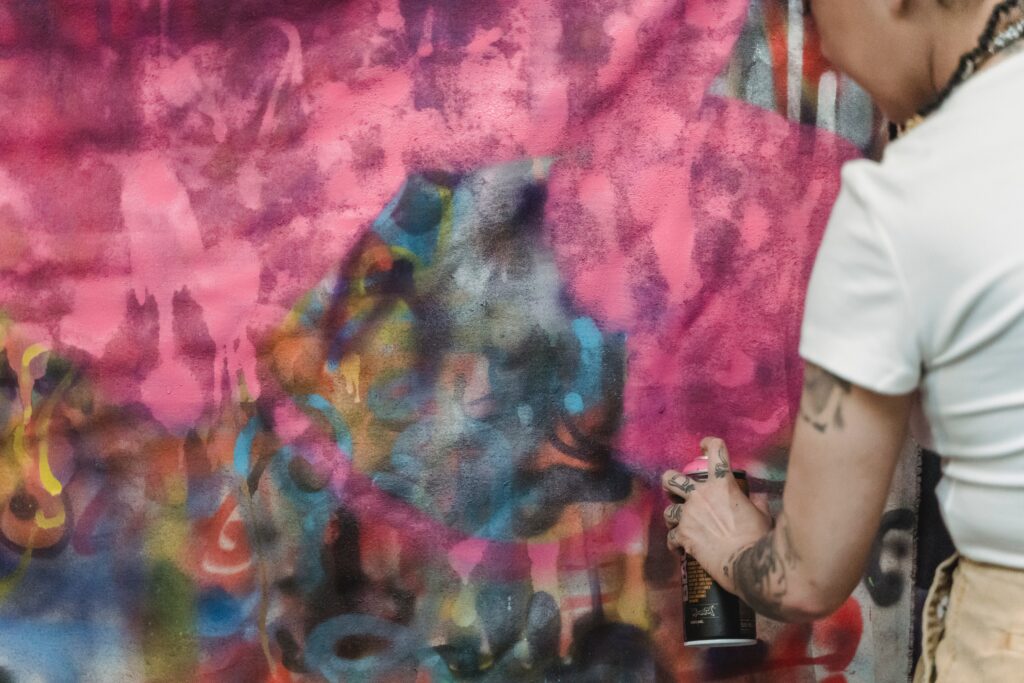
How Did Modern Graffiti Develop?
Contemporary graffiti dates to the late 1960s and is generally said to have arisen from the Black and Latino neighborhoods of New York City alongside hip-hop music and street subcultures and was catalyzed by the invention of the aerosol spray can.
Early graffiti artists were commonly called “writers” or “taggers”. Indeed, the fundamental underlying principle of graffiti practice was the intention to “get up,” to have one’s work seen by as many people as possible, in as many places as possible.
New York is where graffiti culture blossomed, matured, and most clearly distinguished itself from all prior forms of graffiti. Soon after graffiti began appearing on city surfaces, subway cars and trains became major targets for New York City’s early graffiti writers and taggers, as these vehicles traveled great distances, allowing the writer’s name to be seen by a wider audience.

It is important to note that contemporary graffiti has developed completely apart from traditional, institutionalized art forms. Graffiti artists today draw inspiration from Art History at times, but it cannot be said that graffiti grew directly out of the art historical canon. Modern graffiti did not begin as an art form at all, but rather, as a form of text-based urban communication that developed its own networks. Rather than subscribing to the criteria of valuation upheld by the high art world, early graffiti writers developed an entirely new and separate art world, based on their own particular aesthetics developed within the community for judging writers’ content and technique. Something that graffiti art pioneer, Al Diaz stated, “Graffiti is a subculture on to itself- improvising autodidact”
During the late 1970s and early 1980s, many graffiti writers began to shift away from text-based works to including imagery. Key artists involved in this shift included Jean-Michel Basquiat (who wrote graffiti using the tag SAMO) and Keith Haring, whose simple illuminated figures gave testament to the AIDS epidemic, both of whom were active in New York City. Around the same time, many artists also began experimenting with different techniques and materials, the most popular being stencils and wheat paste posters.
What Are The Main Techniques Of Graffiti Art?
While graffiti was founded more as a use of urban communication, the primary techniques have all revolved around the use of spray paint cans. Style greatly shifted between the acts of tagging, bombing, and wildstyle but stayed consistent utilizing bold color choices, and involving highly stylized and abstract lettering.
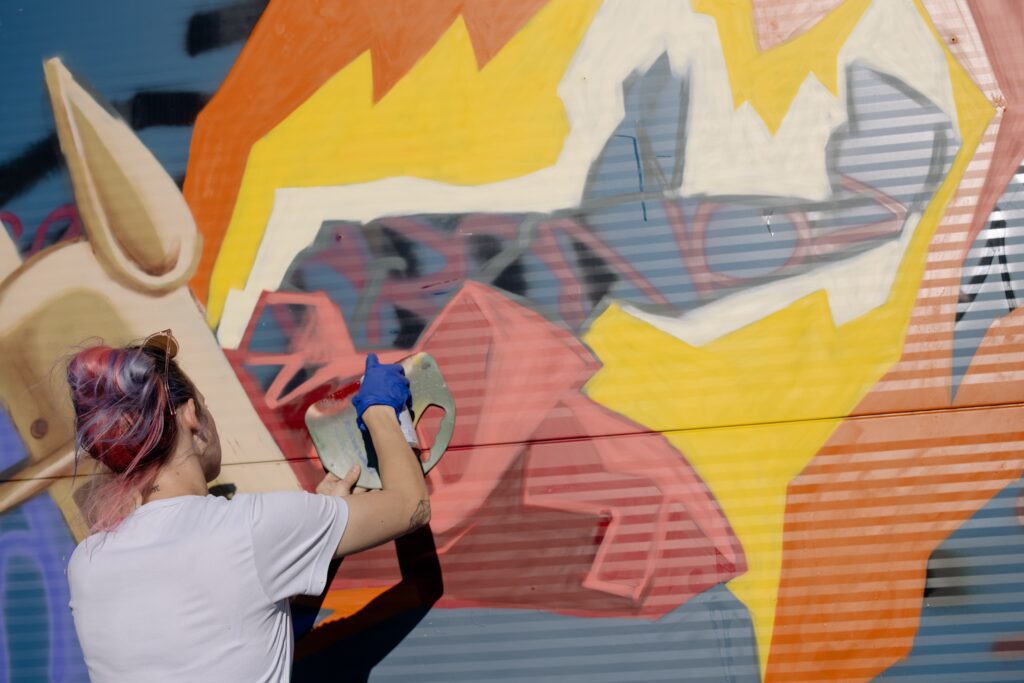
Stencils
Stencils are usually prepared beforehand out of paper or cardboard and then brought to the site of the work’s intended installation, attached to the wall with tape, and then spray painted over, resulting in the image or text being left behind once the stencil is removed.
Many street artists favor the use of stencils as opposed to freehand graffiti because they allow for an image or text to be installed very easily in a matter of seconds, minimizing the chance of run-ins with the authorities. Stencils are also preferable as they are infinitely reusable and repeatable. Sometimes artists use multiple layers of stencils on the same image to add colors, details, and the illusion of depth.
Wheat Paste Posters
Wheat paste is a gel or liquid adhesive made by combining flour or starch with water. Many street artists use wheat paste to adhere posters to walls. Much like stencils, wheat paste posters are preferable for street artists as it allows them to do most of the preparation at home or in their studio, thus only needing a few moments at the site of where they want to install.
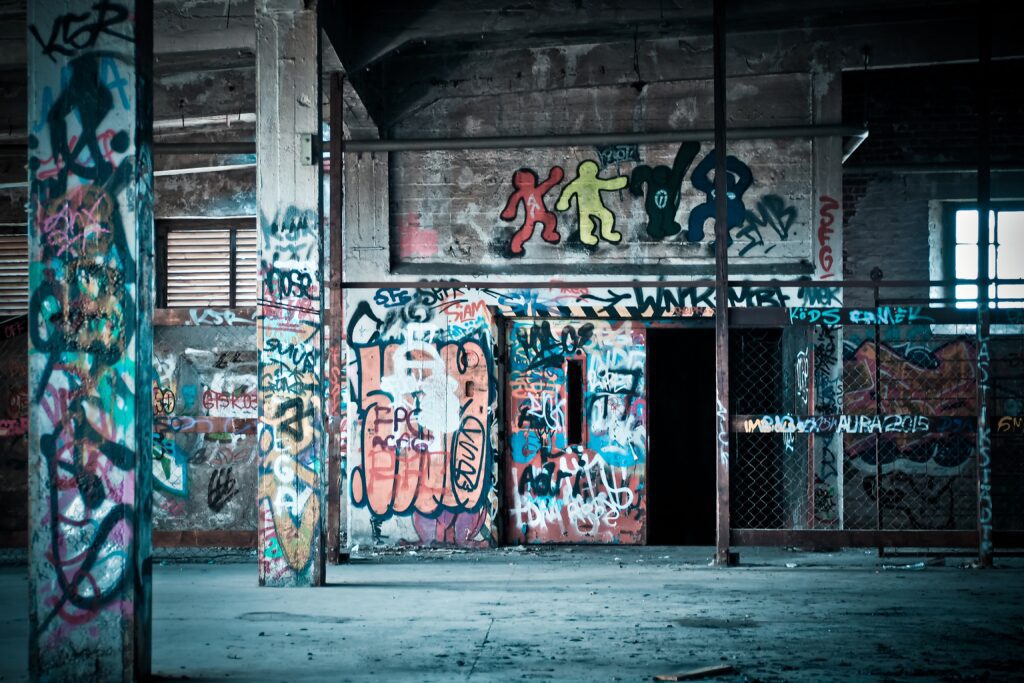
Themes Found In Graffiti Art
Many of the most renowned artworks make a powerful comment on the social and political issues of their time, and graffiti can make a huge impact in this respect. Just look at Banksy, who has become world-famous for his humorous and subversive commentaries like Love is in the Air, first painted on Jerusalem’s West Bank barrier in 2003 as a statement in favor of Palestinian rights.
Similarly, Keith Haring was able to bring mass attention to the crack epidemic through his Crack is Wack mural, as well as homosexuality and the AIDS crisis. Plenty of aficionados would argue that it’s art’s duty to shed light on such topics, and given that these themes relate to ordinary people, perhaps it’s unsurprising that the most iconic examples were created on the streets the target audience lives.
Apart from the social commentary, graffiti also served the purpose of name recognition through “tagging” and “bombing” common terms meaning to write out their name.
Grafitti Art Meets Fine Art
In recent years we have seen the development of street and graffiti art being seen more at auctions, museums, and galleries. This movement from the street to the gallery also indicates a growing acceptance of graffiti and Street Art within the mainstream art world and art history.
Some apply the label “post-graffiti” to the work of street artists that also participate in the mainstream art world. This phenomenon also presents difficulties for art historians, as the sheer number of street artists, as well as their tendency to maintain anonymity, makes it hard to engage with individual artists in any sort of profound way, like Banksy.
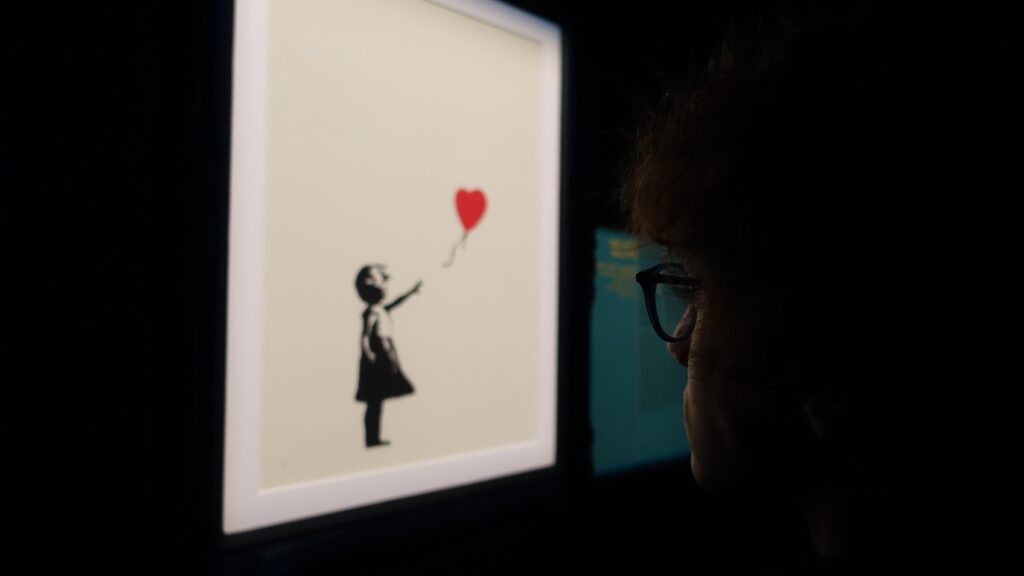
Moreover, it is difficult to insert Street Art into the art historical canon, as it did not develop from any progression of artistic movements, but rather began independently, with early graffiti and street artists developing their own unique techniques and aesthetic styles. Today, street artists both inspire and are inspired by many other artistic movements and styles, with many artists’ works bearing elements of wide-ranging movements, from Pop Art to Renaissance Art.